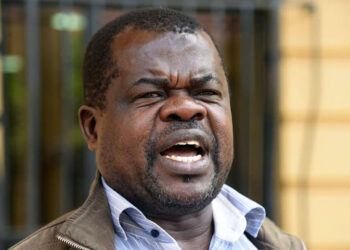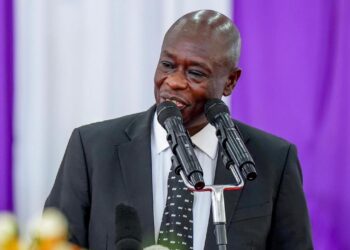Deputy President Kithure Kindiki has condemned the June 25, 2025, protests in Kenya, describing them as the most violent and anarchic since the 2007/08 post-election violence that left over 1,100 dead and displaced 600,000.
Speaking in Kibwezi, Makueni County, Kindiki labelled the demonstrations, led primarily by Gen Z activists, as “shameful”, citing widespread property damage, looting, and attacks on public institutions.
The protests, commemorating the 2024 anti-government demonstrations, resulted in at least 16 fatalities and over 400 injuries, with Amnesty International attributing most deaths to police action.
The June 25 protests erupted across Nairobi, Kisumu, Mombasa, and other cities, driven by anger over government corruption, police brutality, and economic policies.
Demonstrators clashed with police, who used tear gas, rubber bullets, and allegedly live ammunition, leading to eight deaths in Nairobi alone, according to the Kenya Medical Association.
The Kenya National Commission on Human Rights (KNCHR) reported 61 arrests and 83 individuals needing specialised treatment for gunshot wounds. Kindiki warned that the government would not tolerate a repeat of such unrest, stating, “We will do whatever it takes to protect our country from sliding into anarchy.”
Kindiki’s comparison to the 2007/08 post-election violence, a period marked by ethnic clashes and electoral disputes, underscores the severity of the recent unrest.
The 2007 crisis, triggered by allegations of electoral manipulation, saw targeted violence against Kikuyu communities and widespread displacement.
Kindiki, who served on President William Ruto’s legal team during International Criminal Court (ICC) proceedings related to that violence, emphasised that Kenya must avoid returning to such “political barbarity”. He criticised religious leaders and diplomats for allegedly inciting youth, urging responsible exercise of rights.
The protests, initially peaceful, turned chaotic as demonstrators breached police barricades, set fires, and looted businesses. In Nairobi’s CBD, roads were blocked with razor wire, and parliament was heavily guarded.
Social media platforms revealed the unrest, with posts condemning police brutality and circulating claims of bodies locked in a Quickmart OTC supermarket.
Kindiki’s remarks described the protests as an “attempted coup”, with police stations burnt and weapons stolen, suggesting motives beyond peaceful demonstration.
Amnesty International and KNCHR have called for investigations into police conduct, citing excessive force and abductions of over 80 government critics since 2024.
The death of blogger Albert Ojwang in custody, confirmed as an assault, further fuelled public distrust. Protesters demanded Ruto’s resignation, chanting “Ruto must go” and carrying white crosses to honour the fallen.
The government’s ban on live protest coverage, later overturned by a court, drew condemnation for stifling press freedom.
Kindiki’s role as a former Interior Cabinet Secretary, where he oversaw police responses to protests, has drawn scrutiny. Rights groups accused him of endorsing excessive force during the 2024 protests, which killed at least 60 people.
Despite being sacked and reappointed by Ruto, Kindiki remains a polarising figure, now tasked with preventing further unrest as Deputy President. His wealth, reportedly increasing by $1 million in 20 months, has also raised questions about government transparency.
The protests reflect deeper issues of unemployment, corruption, and a cost-of-living crisis, with Kenya’s youth, making up 68% of the unemployed, leading the charge.
The 2024 Finance Bill protests, which saw parliament stormed, set a precedent for this year’s unrest. As Kenya grapples with its volatile political landscape, Kindiki’s condemnation signals a firm stance against dissent, but activists vow to continue demanding accountability.
The international community, including the US and UK, has urged restraint, emphasising the right to peaceful protest.















